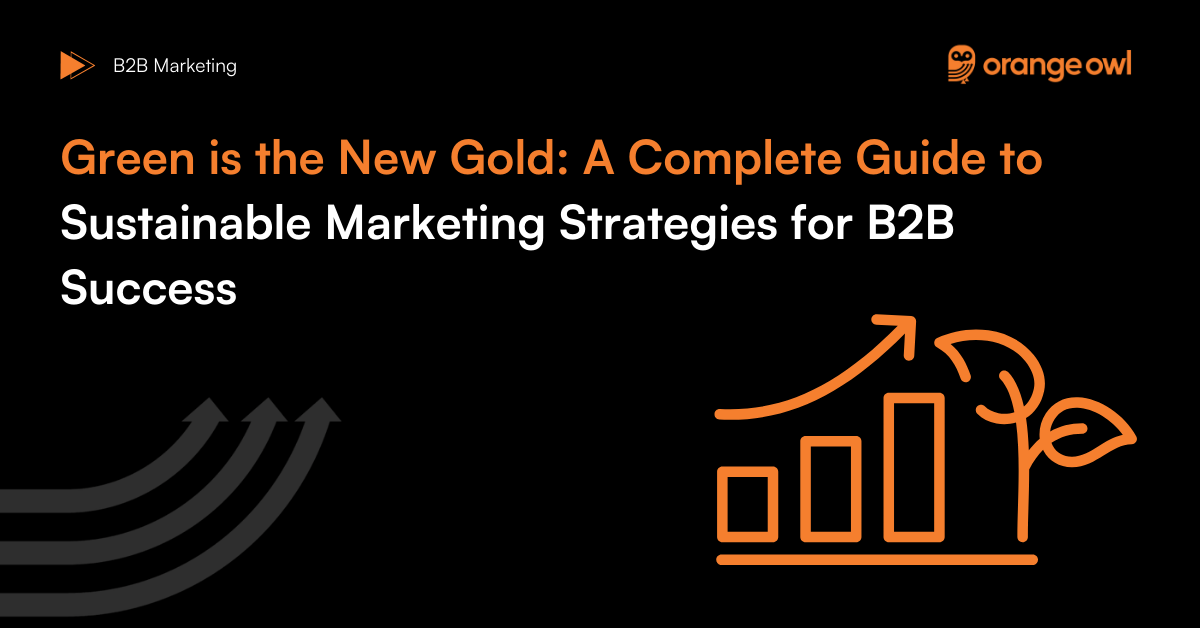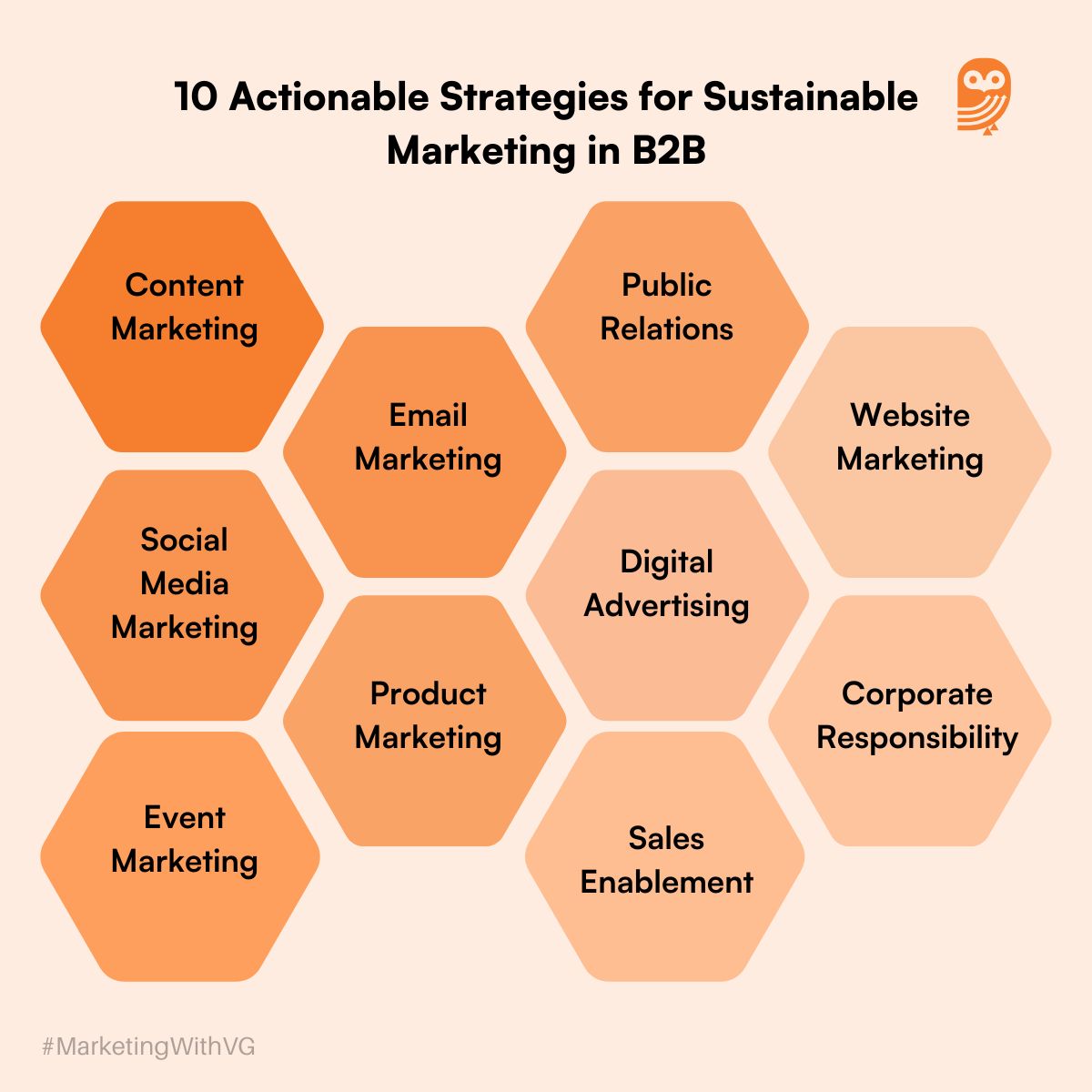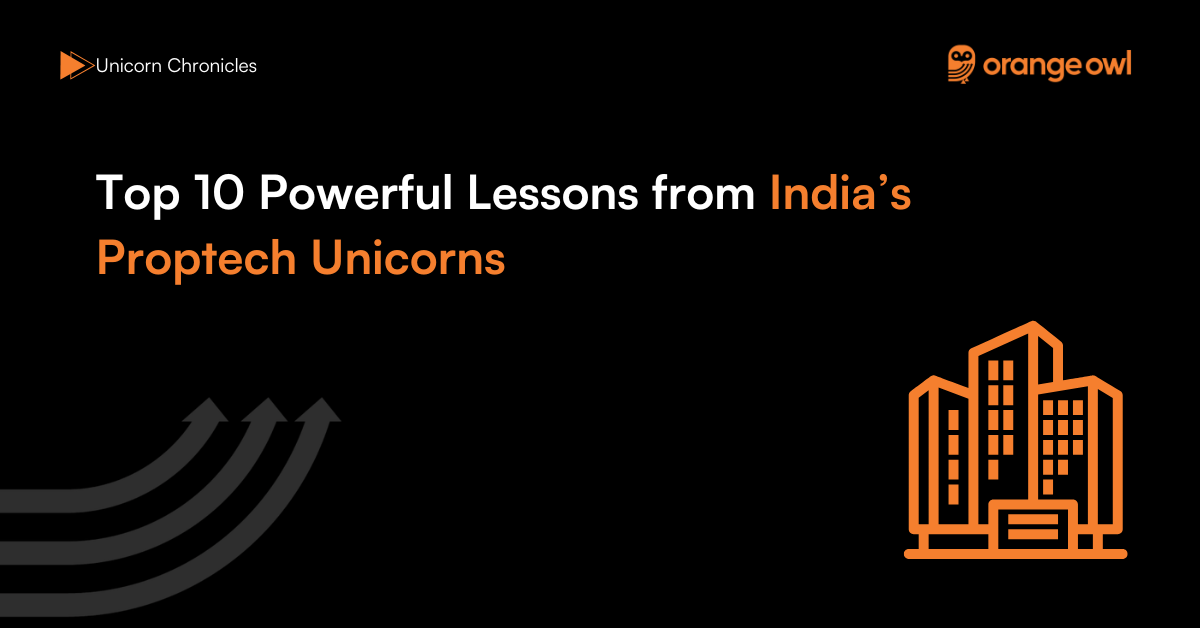Green is the New Gold: A Complete Guide to Sustainable Marketing Strategies for B2B Success
Vivek Goel
February 9, 2025

Table of Contents
Introduction
As the world grapples with environmental crises, sustainability has moved from a niche interest to a core component of business strategy. For B2B companies, sustainable marketing isn’t just about compliance—it’s a strategic imperative that drives growth, enhances brand reputation, and aligns with the values of increasingly discerning clients and partners.
This comprehensive guide delves into the essential benefits of sustainable marketing and provides a rich array of actionable strategies to infuse sustainability into every facet of your marketing efforts.Sustainability is becoming a major factor in decision-making for B2B buyers, with 72% of companies prioritizing sustainable business practices
Why Sustainable Marketing is Essential for B2B Companies Success
Rising Consumer Expectations
Today’s buyers, both individuals and businesses, expect more than just quality and cost-effectiveness; they prioritize vendors who demonstrate a commitment to sustainability. This shift is accelerating in the B2B realm as companies recognize the need to reduce their own environmental footprint through responsible sourcing.
Regulatory Compliance
Governments around the world are tightening environmental regulations, making sustainable marketing not just a moral choice but a compliance requirement. Companies proactive in their sustainable marketing efforts are better positioned to adapt to these regulations swiftly and cost-effectively.
Brand Differentiation and Loyalty
In crowded markets, sustainability can significantly differentiate a brand. Companies known for their genuine commitment to sustainability practices are likely to enjoy enhanced customer loyalty and can often command a premium for their services or products.
Strategic Benefits of Sustainable Marketing
- Enhanced Corporate Image: Companies that effectively communicate their sustainability efforts are often regarded as industry leaders. This enhanced image can attract not only customers but also talented employees who want to work for socially responsible companies.
- Operational Cost Savings: Implementing sustainable practices often leads to significant cost reductions. These savings can be achieved through more efficient use of resources, such as energy or raw materials, and by minimizing waste.
- Increased Customer Retention: Businesses publicly committed to sustainability tend to retain customers longer. Sustainability-conscious businesses see these companies as less risky and more reliable partners.
- Access to New Markets: Sustainability credentials can open doors to new markets, especially in regions or sectors where environmental impact is a critical buying criterion.
- Innovation Leadership: The focus on sustainable practices drives innovation, helping companies develop new products and services that meet the evolving demands of a market increasingly influenced by sustainability.
10 Actionable Strategies for Sustainable Marketing in B2B
Sustainable Marketing Strategy 1: Content Marketing
Publish Sustainability Reports: Showcase your company’s efforts and achievements in sustainability through annual reports.
Case Studies on Eco-friendly Solutions: Demonstrate how your products or services have helped other companies achieve their sustainability goals.
Sustainable Marketing Strategy 2: Social Media Marketing
Highlight Green Initiatives: Regularly post about your company’s sustainability projects or community engagements.
Engage in Eco-themed Challenges: Create or participate in social media challenges that promote sustainability.

Sustainable Marketing Strategy 3: Event Marketing
Digital-first Events: Reduce physical waste by hosting webinars or online conferences.
Eco-friendly Event Swag: Opt for digital giveaways or items made from recycled materials.
Sustainable Marketing Strategy 4: Email Marketing
Eco-conscious Email Campaigns: Use email signatures to spread awareness about your sustainability initiatives.
Promote Paperless Billing: Encourage clients to switch to electronic invoices or statements.
Sustainable Marketing Strategy 5: Product Marketing
Highlight Product Lifecycle: Communicate the environmental impact of your products from manufacture to disposal.
Eco-friendly Packaging: Use recycled materials or minimal packaging for your products.
Sustainable Marketing Strategy 6: Public Relations
Press Releases on Sustainability Milestones: Publicize your significant achievements in sustainability through press releases.
Partner with Eco-focused NGOs: Collaborate with non-profits for joint marketing campaigns that highlight shared values.
Sustainable Marketing Strategy 7: Digital Advertising
Targeted Ads for Sustainability Initiatives: Use online ads to promote specific environmental projects or product features.
Advertise on Eco-friendly Platforms: Choose platforms known for their green credentials to host your ads.
Sustainable Marketing Strategy 8: Sales Enablement
Train Sales Teams on Sustainability Benefits: Ensure your sales team can articulate the environmental benefits of your offerings.
Sustainability as a Sales Differentiator: Emphasize how your sustainable practices can reduce the total cost of ownership for customers.
Sustainable Marketing Strategy 9: Website Marketing
Dedicated Sustainability Page: Create a page on your website that details your company’s sustainability efforts and achievements.
Optimize Website for Energy Efficiency: Implement best practices for reducing your website’s energy consumption.
Sustainable Marketing Strategy 10: Corporate Responsibility
Internal Sustainability Initiatives: Implement programs that encourage employees to participate in sustainability efforts.
Supplier Sustainability Assessments: Evaluate your supply chain’s sustainability practices and set improvement targets.
Common Mistakes in Sustainable Marketing
Greenwashing: Misrepresenting your company’s environmental impact can lead to public backlash and loss of trust. Always ensure your claims are transparent and backed by credible evidence.
Lack of Consistency: Sporadic or inconsistent communication about sustainability can confuse customers and dilute your message. Sustainability should be integrated into all aspects of marketing.
Ignoring Internal Practices: Promoting sustainability externally while neglecting internal practices (e.g., waste management and employee engagement in green initiatives) can result in credibility gaps.
Overlooking the Supply Chain: Not assessing and improving the sustainability of your supply chain can undermine your marketing claims. Customers expect end-to-end accountability.
Failing to Measure Impact: Not tracking or reporting the tangible results of your sustainability efforts can make it difficult to demonstrate progress and build trust with stakeholders.
Trends in Sustainable B2B Marketing
Integration of AI and Sustainability: Leveraging AI to optimize resource use, reduce waste, and analyze customer behaviour for more targeted and sustainable marketing strategies.
Increased Transparency: Real-time data-sharing platforms and blockchain technologies are enabling companies to provide detailed, verifiable information about their environmental impact.
Collaborative Marketing: Partnering with other companies, NGOs, or industry leaders to co-create and promote sustainability initiatives, demonstrating a unified approach to tackling environmental challenges.
Focus on Circular Economy: Highlighting efforts to reduce waste through recycling, refurbishing, and closed-loop supply chains, which resonate strongly with sustainability-focused clients.
Sustainability as a Value Driver: Shifting from sustainability as a compliance or cost centre to positioning it as a core driver of innovation, customer loyalty, and profitability.
Conclusion
Sustainable marketing is no longer just a trend but a core component of modern business strategy. By adopting these practices, B2B companies can not only improve their market positioning but also contribute to the global imperative of sustainability. Embrace these strategies to ensure your marketing efforts reflect your commitment to a better, greener future.
Frequently Asked Questions (FAQs) for Sustainable Marketing Strategies for B2B Success
The first step is to conduct an internal sustainability audit to understand the company’s current environmental impact and identify areas for improvement. This can guide strategic priorities and ensure authenticity in messaging.
Success can be measured through KPIs like reduced carbon footprint, increased client retention rates, positive brand sentiment, customer inquiries about sustainability practices, and growth in revenue from eco-conscious customers.
Companies should prioritize transparency by using verified data, third-party certifications, and clear communication about their sustainability efforts. Avoid making claims that cannot be substantiated or exaggerating the impact of small initiatives.
Start with low-cost initiatives like paperless invoicing, optimizing digital marketing to reduce energy use, and sharing authentic stories about small-scale eco-friendly practices on social media.
Industries with a high environmental impact, such as manufacturing, logistics, and technology, face greater scrutiny and can benefit significantly from adopting sustainable marketing.
Yes, by involving suppliers in sustainability initiatives and conducting sustainability assessments, companies can foster stronger partnerships based on shared environmental goals.
Tools like carbon footprint calculators, CRM platforms with sustainability tracking features, and AI-driven resource optimization can streamline efforts and provide actionable insights.
Sustainable marketing should complement broader CSR goals by communicating the company’s commitment to social and environmental issues, showcasing relevant projects, and engaging stakeholders in joint efforts.
Certifications and eco-labels, such as ISO 14001 or Energy Star, validate a company’s sustainability claims, enhance credibility, and differentiate products and services in competitive markets.
By demonstrating how their sustainable practices reduce costs, mitigate risks, or enhance efficiency for their clients. For example, emphasizing how eco-friendly products can lower total ownership costs or align with a client’s environmental goals.


